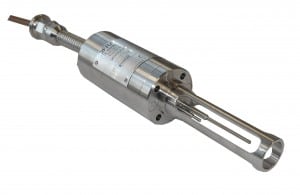How to measure the viscosity of a fluid?

Viscosity (from the Latin viscum, gui, glu) can be defined as the totality of the phenomena of resistance to the movement of a fluid for a flow with or without turbulence. Viscosity reduces the fluid’s freedom of flow and dissipates its energy.
Laboratory viscometers and process viscometers
Measure viscosity in laboratory viscometers:
In the laboratory, a wide range of measuring devices, from the simplest to the most sophisticated, allows to measure the dynamic viscosity or the kinematic viscosity, or even the rheological behavior of fluids. Nevertheless, laboratory measurements do not allow an optimal control of an industrial process because of the sample collection, its transport to the laboratory and the measurement time itself.
Measure viscosity in process viscometers:
The so-called “process viscometers” are measuring

instruments directly installed in industrial processes. They are referred to in the technical literature as “inline viscometers” when they are installed directly on the main pipeline, and as “online viscometers” when they are installed on a bypass.
The process viscometers must meet specific constraints:
- to be installed directly on pipes, tanks or reactors
- be resistant to process conditions and industrial environment (temperature, pressure, corrosion, fouling, rain, humidity, salinity, …)
- comply with current regulations (equipment operating in explosive areas, equipment operating under pressure, etc.)
- operate automatically
- provide an instant and continuous measurement
- require minimum maintenance
- be repeatable


